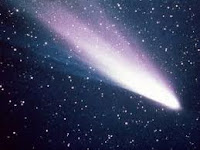The Size of the Sun, the Earth and the Moon.
1. The Sun is much bigger than the Earth and the Moon.
2. The diameter of the Sun is about 1 400 000 kilometres.
3. The diameter of the Earth is about 12 756 kilometres.
4. The diameter of the Moon is about 3480 kilometres.
5. We can compare the size of the Sun, the Earth and the Moon by using a basketball, a
glass marble and a sago.
a. A basketball represents the Sun.
b. A glass marble represents the Earth.
c. A sago seed represents the Moon.




























